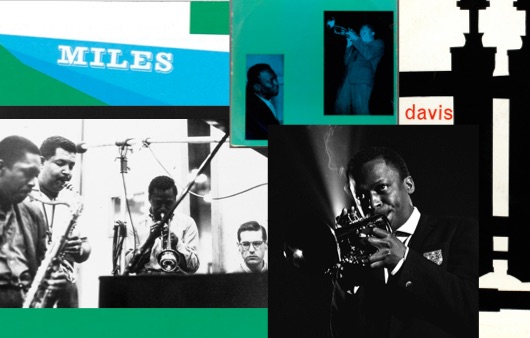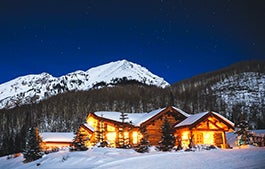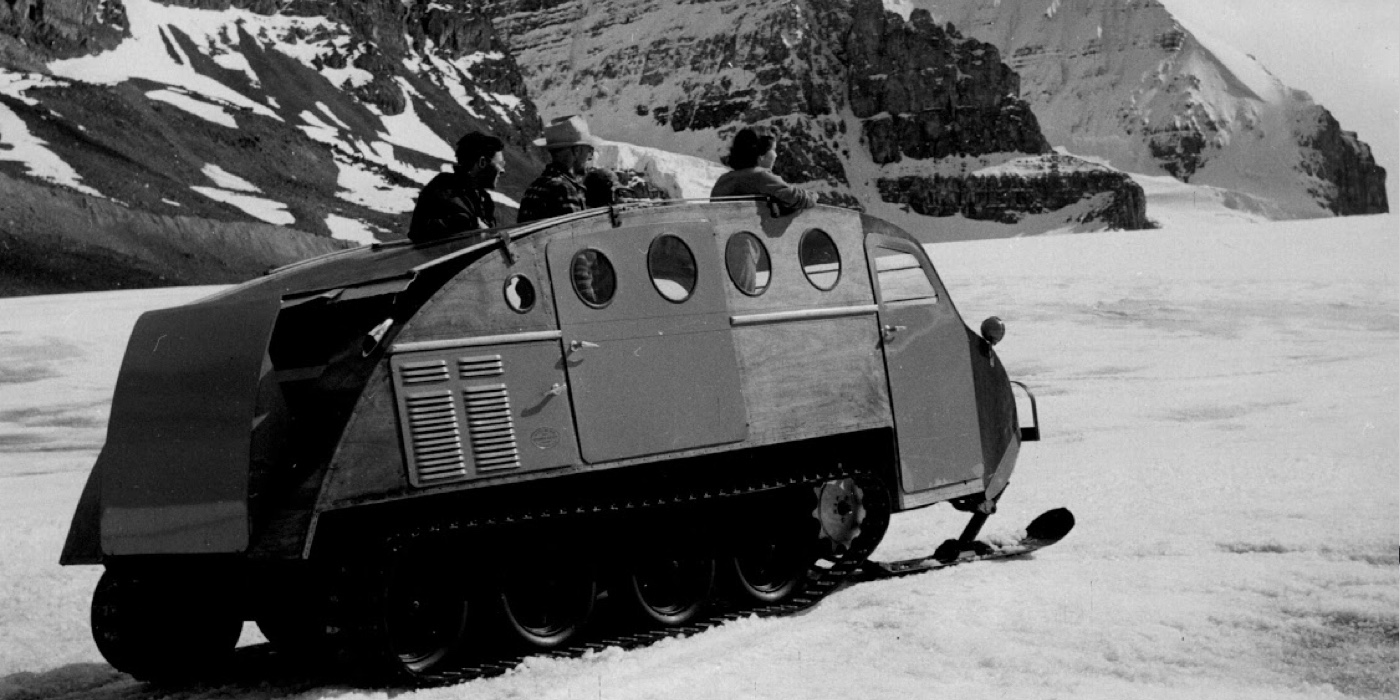
Snowbound
As the first-ever vehicle patented to travel on snow, the Bombardier remains a coveted, one-of-a-kind find for collectors—and an unforgettable ride for cold weather explorersIt’s a quiet morning on the western edge of Yellowstone National Park, cold enough that the hot air emitting from the nostrils of the bison herds gathers into a cloud of condensation above them. They slowly clear a path and venture into the frosted plain as a rumbling, low-lying machine inches along so as not to disturb them. It’s round and set atop two rotating tracks and a pair of skis. It appears otherworldly, or perhaps from another time, though it’s not certain whether that’s the past or the future. A sighting is rare, so much so that there isn’t much of a consensus on what to call them. To some, they’re simply a snowmobile, and to others, they’re a “snow bug” or a “snowcat,” but to a small group of steadfast operators, the machine is referred to as a Bombardier.
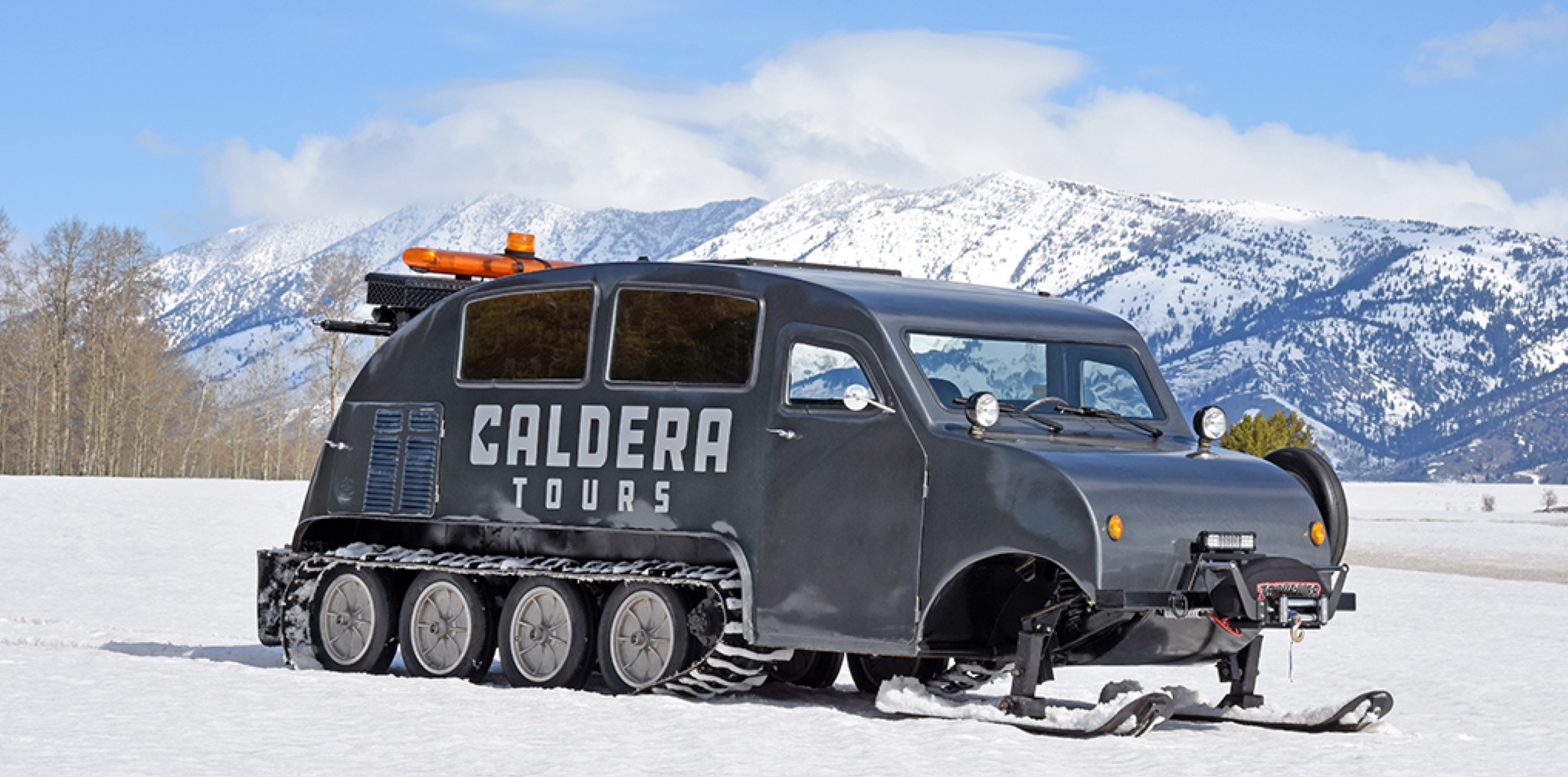
Manufactured between 1937 and 1981 by the Canadian aircraft manufacturer by the same name, the Bombardier was the brainchild of founder Joseph-Armand Bombardier, who is said to have wanted an automobile capable of “floating on snow.” The first result—the Bombardier B7—did just that, offering seating for seven passengers inside a dark, rattling metal construction that soon became an essential method of transport for mail carriers and Canadian schoolchildren during the trying snow season that could span six months or more. Over its 44 years of production, most of which relied on hand assembly, the Bombardier saw small adjustments to its composition, shifting from a wooden to steel frame and making additional room for any passenger or cargo thrown its way.
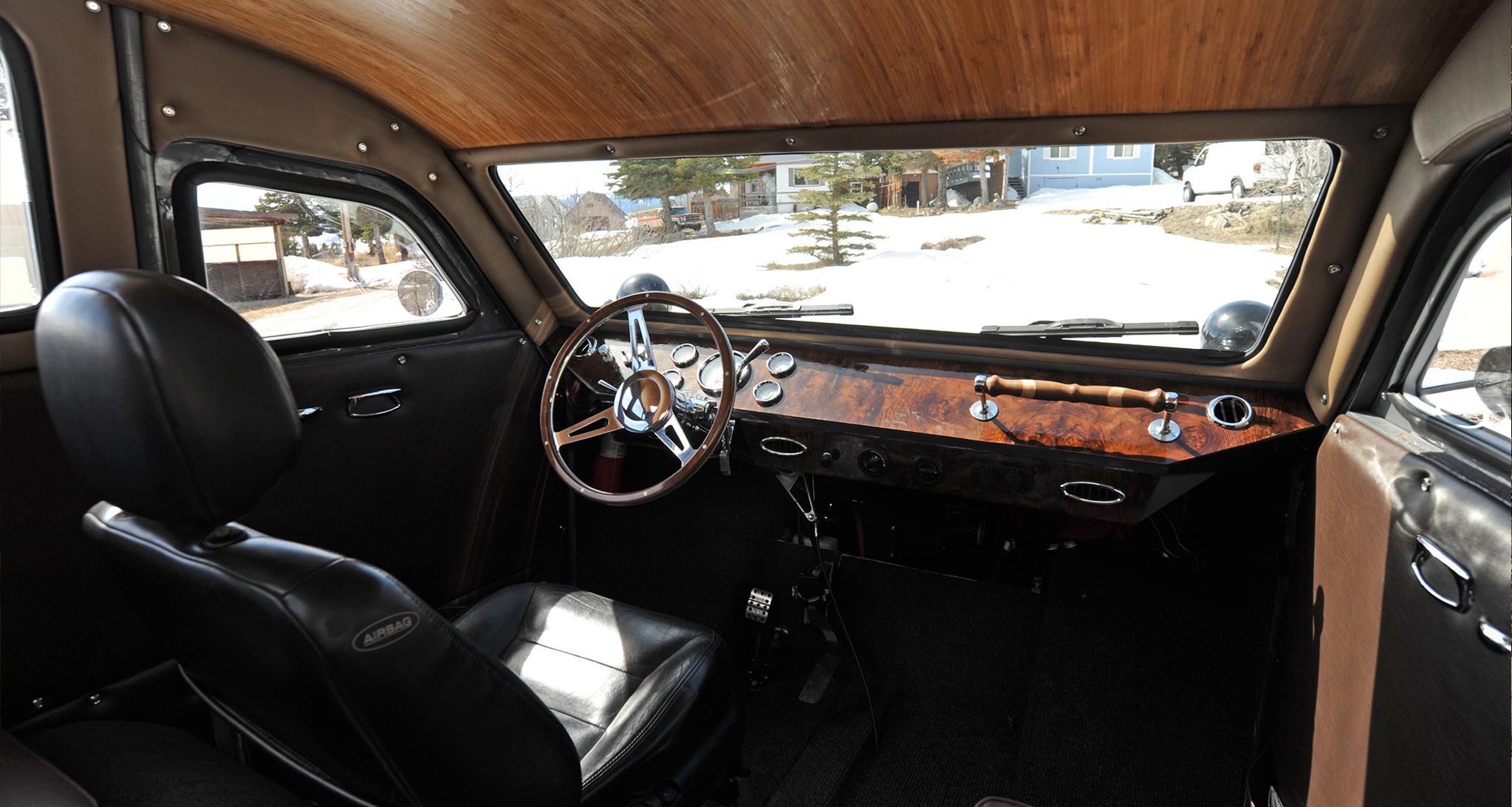
These days, they live on as equal parts workhorse and pleasure cruiser. For John Layshock, owner of Caldera Tours, which takes winter travelers into Yellowstone, his 1952 Bombardier arrived thanks to a chance discovery through an online auction, where a selection of defunct machinery once owned by the National Park Service was on the block. “To meet emission standards, we had to fit them with modern engines, but I took it a step further,” he explains. This included the addition of power steering, as well as heated seats, a sunroof, larger windows for admiring the mountain ranges and wildlife, and chrome accents to complement the wooden interior. Some days, he arranges a warming lunch along the back bumper. “It always causes some confusion when we encounter fellow park guests,” he says. “Some think it’s a military vehicle, and some think it’s a tractor.”
There are purists in the Bombardier community too, like 23-year-old Graydon Davidson, whose family owns and operates a fleet of 20 Bombardiers on Ontario’s Lake Simcoe. During the winter months, once the lake freezes over with 12 inches of ice or more, they traverse through deep snow and slush about four miles offshore to try their luck at a favorite pastime, ice fishing. “Ours are all true original Bombardiers, as they were when they rolled off the assembly line 40, 50, 60 years ago,” he says. Among them, his 1974 R-18 named “Miss Bonnie” is a personal favorite, given its unlikely provenance. “It was lying just in a field, further north in Cochrane, Ontario,” Davidson recalls. “It had no track, no door—just a stripped-down machine in a field. We brought it back to life, and that’s what I’ve driven since I was a kid.”
Stories of monumental restoration are commonplace in the world of Bombardiers. Knowing they’ll never be made again gives each owner the unique mission of not only breathing life into their own machines but continuing the legacy of this piece of history that, much like the wildlife it encounters on its far-reaching journeys, remains at risk of extinction. “They’re hard to find, and the restoration is never easy,” Davidson says. “But for the job they do, and the history behind them, there’s really no other machine like it in the world.”
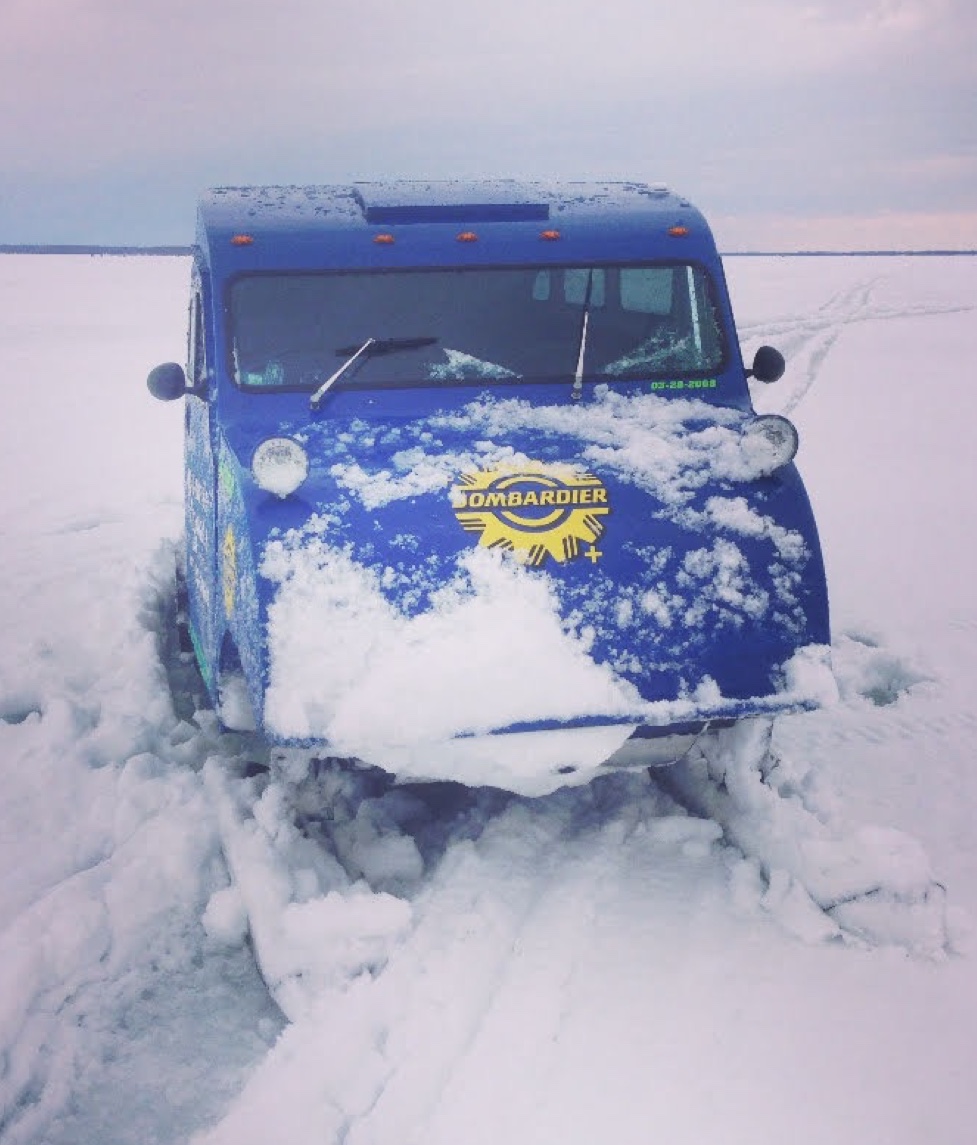
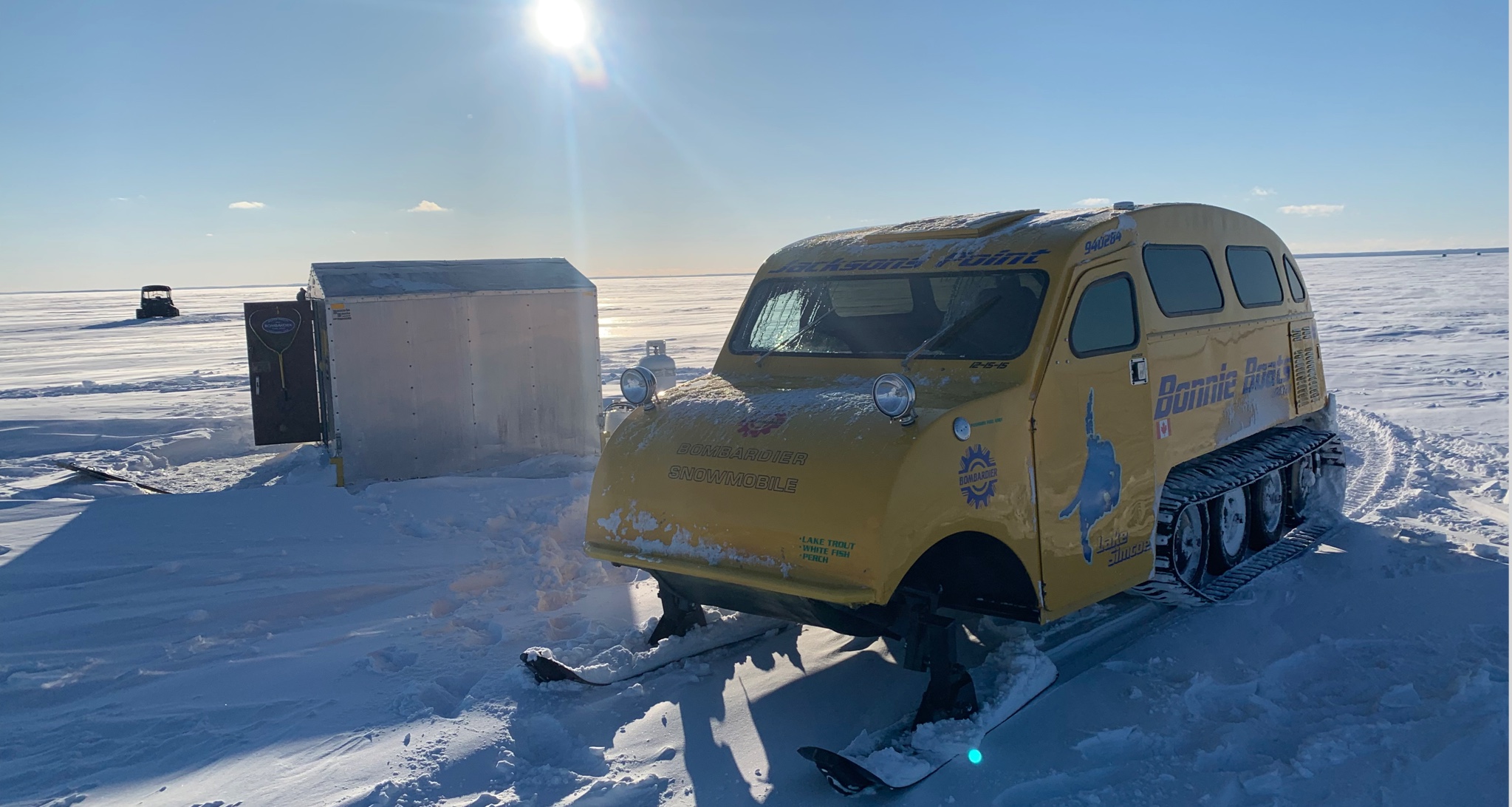
- Courtesy of Caldera Tours
- Courtesy of Wikicommons




